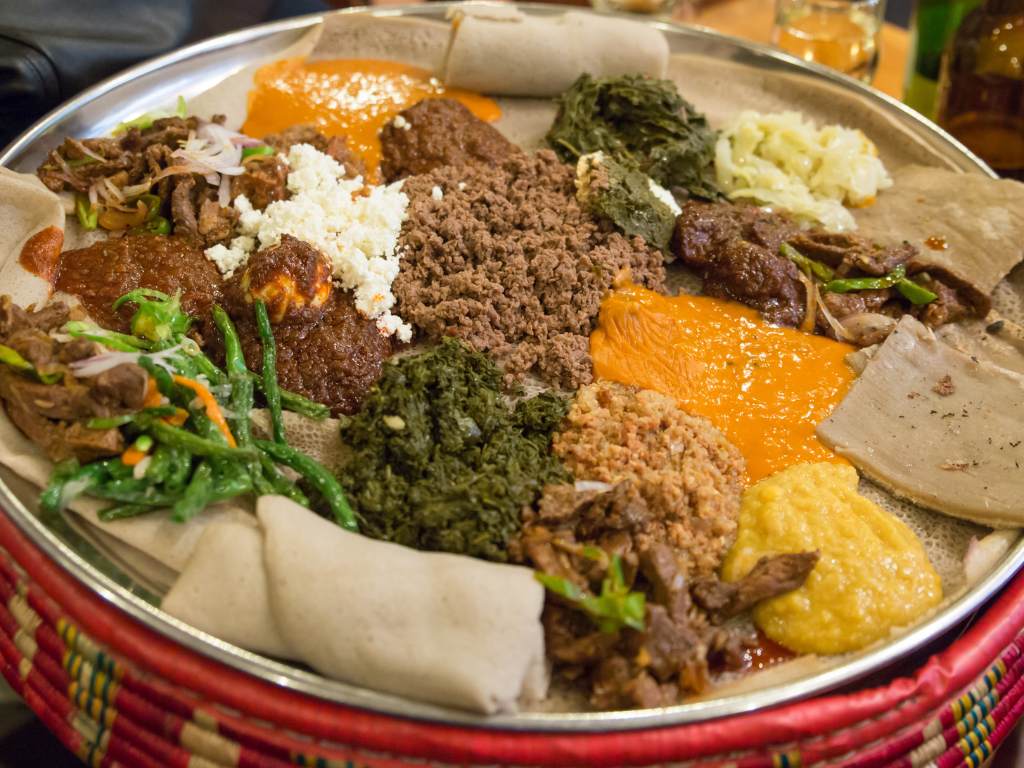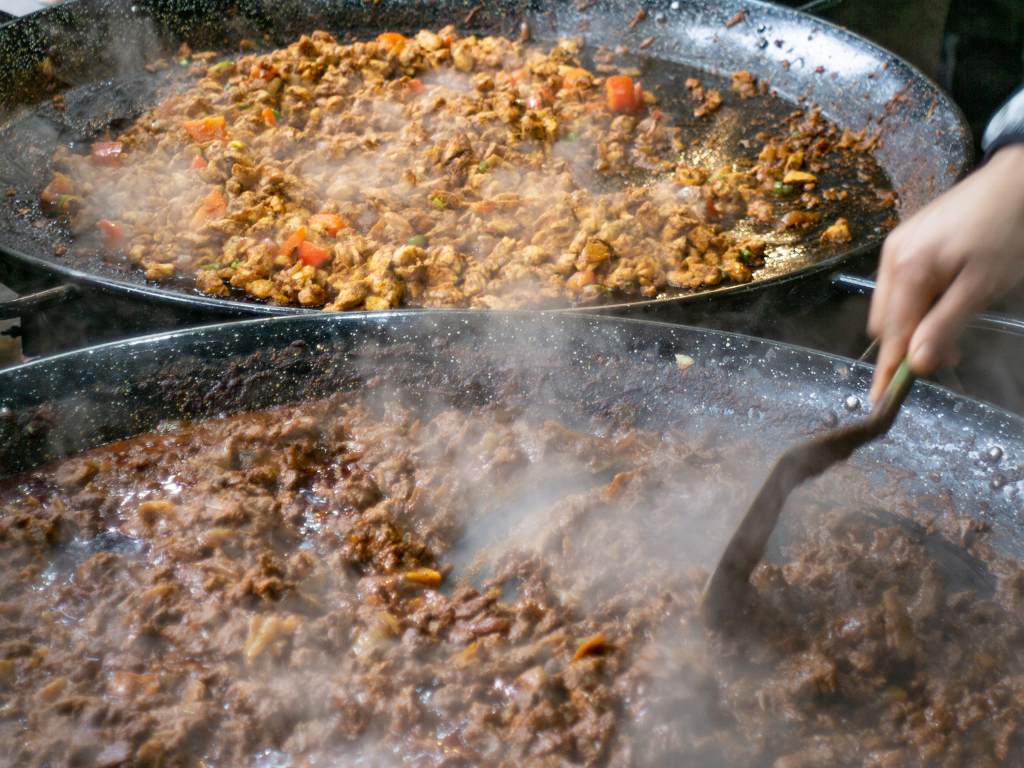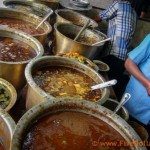As someone constantly scouting out flavorful food on my trips, Ethiopian cuisine stands out for its incredibly fresh and aromatic ingredients, complex seasoning, and miles of rich heritage infused into each dish.
The local vegetables, herbs, and spices used are grown in mineral-rich soil and picked at peak ripeness, allowing vibrant natural flavors to shine. It’s easy to see why Ethiopian cooking is considered a standout example of all natural food done right!
From the moment the fermented scents hit your nose to the explosion of herbs, spices, and textures in every bite – eating traditional Ethiopian style allows you to experience East Africa’s bountiful natural larder at its tastiest.
– A Food Fun Travel Guest Post –
Here’s why this incredible cuisine should be on every wanderluster’s must-try list:
An Array of Exotic Spices, Herbs and Ingredients
Ethiopian dishes draw inspiration from African, Middle Eastern, and Indian traditions – which means the ingredients and flavors in the cuisine are wonderfully diverse and complex. Just take a look at some of the staples:
- Berbere – the backbone of Ethiopian cooking, this fiery red pepper blend contains up to 14 spices like fenugreek, garlic, ginger, rue, ajwain, basil, and more.
- Niter kibbeh – a ghee-like clarified butter infused with aromatics like cinnamon, cardamom, and clove
- Injera – the spongy sourdough flatbread backed from teff flour that serves as edible cutlery
- Wats – rich stews packed with meat, vegetables, legumes, or lentils and simmered with berbere spice
- Azifa – a refreshing green lentil salad dressed with tart lemon juice and garlic
- Ayibe – a crumbly fresh farmer cheese
- Awaze – a chili paste made from berbere and olive oil for dipping
And those are just a few of the most popular items! With such flavor complexity and variety even in everyday dishes, it’s no wonder Ethiopian food is so globally cherished.
A True Full-On Feast for The Senses

When it comes to dining, Ethiopians don’t mess around! Meals are a lengthy special experience focused on togetherness, with an array of dishes presented family-style on a large woven plate or basket called a mesob. Rather than being served individual plates, everyone gathers around the mesob, tears off pieces of tangy injera bread, and uses them to grab mouthfuls of the different wat stews, salads, and veggie sides.
How’s that for a communal dining experience? Not to mention injera makes for a fun alternative to silverware – go ahead, don’t be shy to use those hands! Just be sure to only use your right hand, as traditionally practiced in Ethiopian culture. It may feel a bit messy at first, but allowing yourself to indulge hands-on is all part of the epic food journey.
Meat, Fish, and Vegetables Galore – Flavors For Every Palate
With Ethiopian cuisine, there’s no shortage of protein options, that’s for sure! Succulent lamb, beef, and chicken feature heavily on menus, slowly simmered with tomatoes, onions and oodles of spices until fall-off-the-bone tender. For seafood lovers, be on the lookout for fish wat – I’m still drooling over the tilapia I devoured stewed in a piquant ginger-garlic broth.
But fear not, my veggie friends – Ethiopians are masterful at transforming humble lentils, split peas, collard greens, cabbage, and carrots into totally crave-worthy plates. In fact, the national dish consists of injera topped with colorful seasoned lentils and veggies. And let me tell you, after experiencing the depths of flavor in dishes like kik alecha (spiced yellow split peas) or gomen (minced collards), meat almost becomes an afterthought! So whether you’re a full-on carnivore, vegan, or somewhere between, a traditional Ethiopian feast has something spectacular in store for your tastebuds.
An Ancient, Living Culinary Tradition

As one of the world’s oldest extant civilizations, Ethiopia holds centuries-old culinary traditions passed down through generations. From cooking techniques, rituals, and dances to the songs accompanying coffee ceremonies and special feasts – food continues to play a vibrant role in celebrations of life’s blessings.
So for travelers, indulging in dishes locals have prepared the same way for eras not only satisfies hunger but provides precious insight into enduring cultural heritage. By supporting Ethiopia’s treasured family-run restaurants, your meal money helps preserve time-honored cooking customs vulnerable to modernization. Not to mention puts a smile on a proud mama’s face when you ask for a second helping!
A Little Taste of Ethiopia No Matter Where You Are
Can’t manage a trip to East Africa? No worries! Thanks to large Ethiopian diasporas across every continent, their incredible comfort foods are more accessible than ever – no passport required. From North America to Europe, Asia to Australia – injera and wats have officially gone global.
So keep an eye out right in your own backyard for an Ethiopian restaurant that imports authentic spices and products directly from Addis market stalls. I’m willing to bet as their enticing aromas hit you, hunger pangs for a true taste of Ethiopia will, too!
Wrap-up
Ethiopian cuisine offers an extraordinary culinary adventure from fragrant stews to savory veggie sides, spongy injera “utensils,” and a vibrant culture interwoven with food. Seeking out this singular flavor experience provides the perfect excuse to ditch the silverware, get those fingers working, and immerse yourself in centuries of cooking tradition from a proud land. So, seriously, travelers, do yourselves a culture-packed favor – make Ethiopian food the top priority dining reservation on your next journey! Just be sure to arrive hungry because holding back will not be an option once that mesob platter hits the table.




